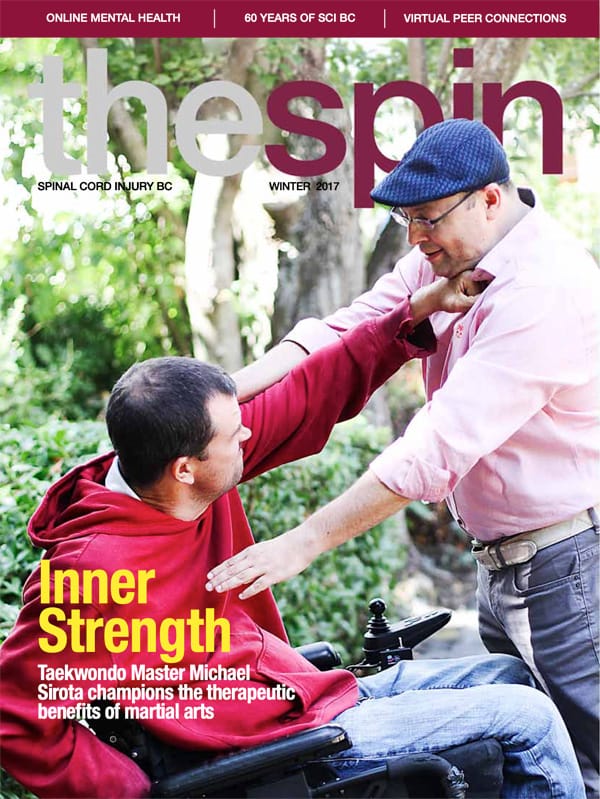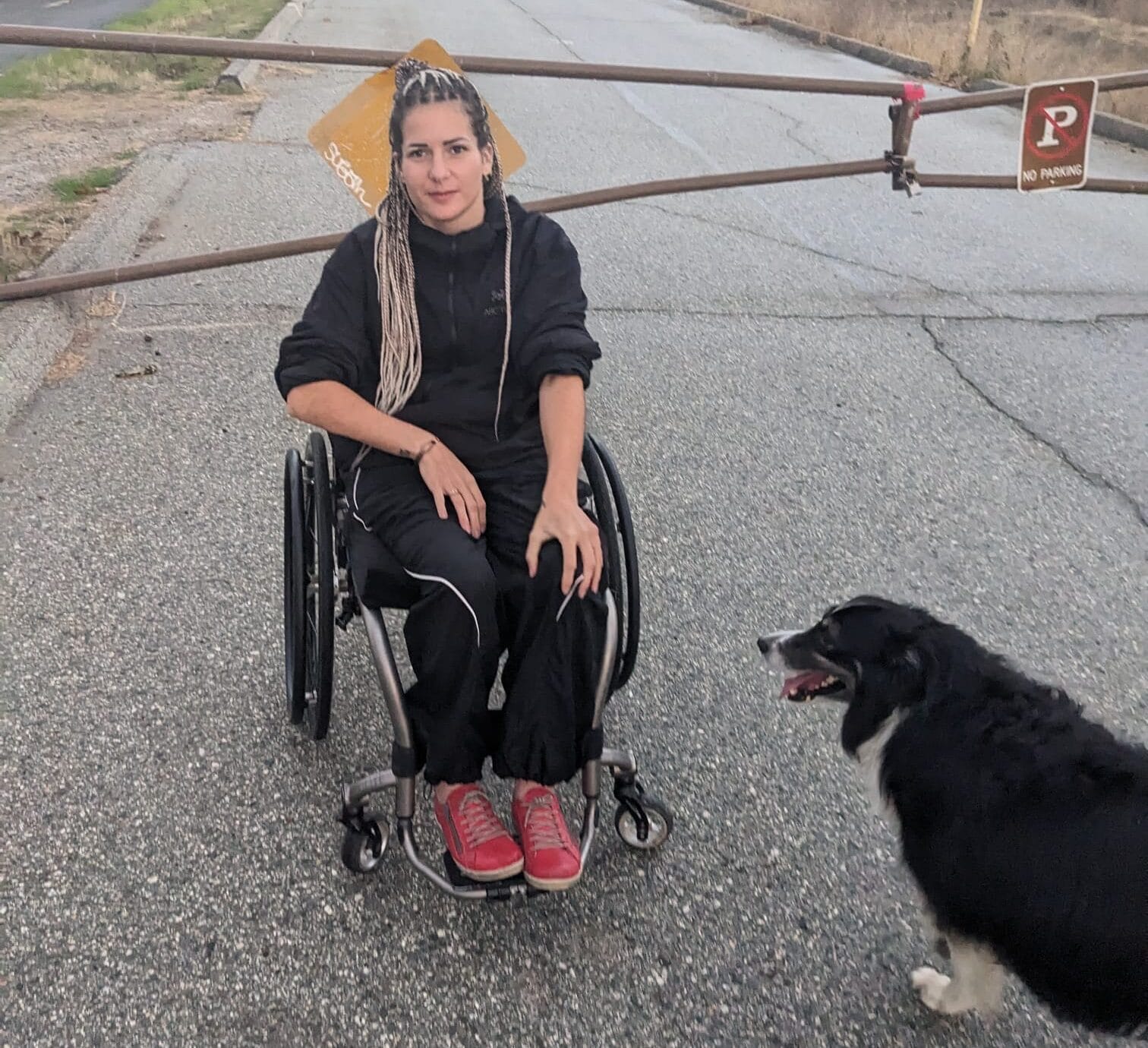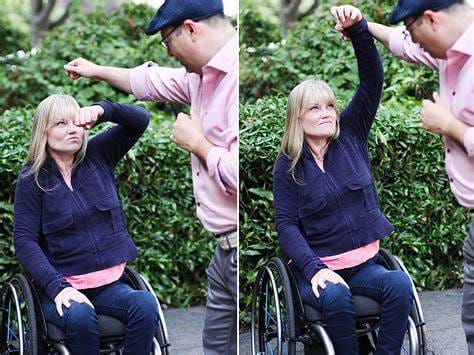
Vulnerability is a vicious cycle. You lack confidence—you’re an easy target. You’re an easy target—you lack confidence.
The closed circuit is powered by insecurity, whether you’re a teen trudging through the social swamps of high school, a solo traveller navigating unfamiliar neighbourhoods, or one of the roughly 15 percent of Canadians living with a disability, wondering just how you’ll fare in a physical confrontation.
For every heroic story of a wheelchair user thwarting a robbery—yes, this very takedown was captured on security cameras in a Vancouver convenience store in 2010—there are tens of others marked by confusion and fear. Last year, in our SCI BC community alone, one Peer suspected she was being followed. Another had his vehicle stolen. And a third received aggressive online messages from someone known to him in real life. It’s no secret that people with disabilities are more vulnerable to abuse, intimidation and attacks. Even without a physical assault, the feeling of helplessness in a close-call situation can be traumatic in itself.
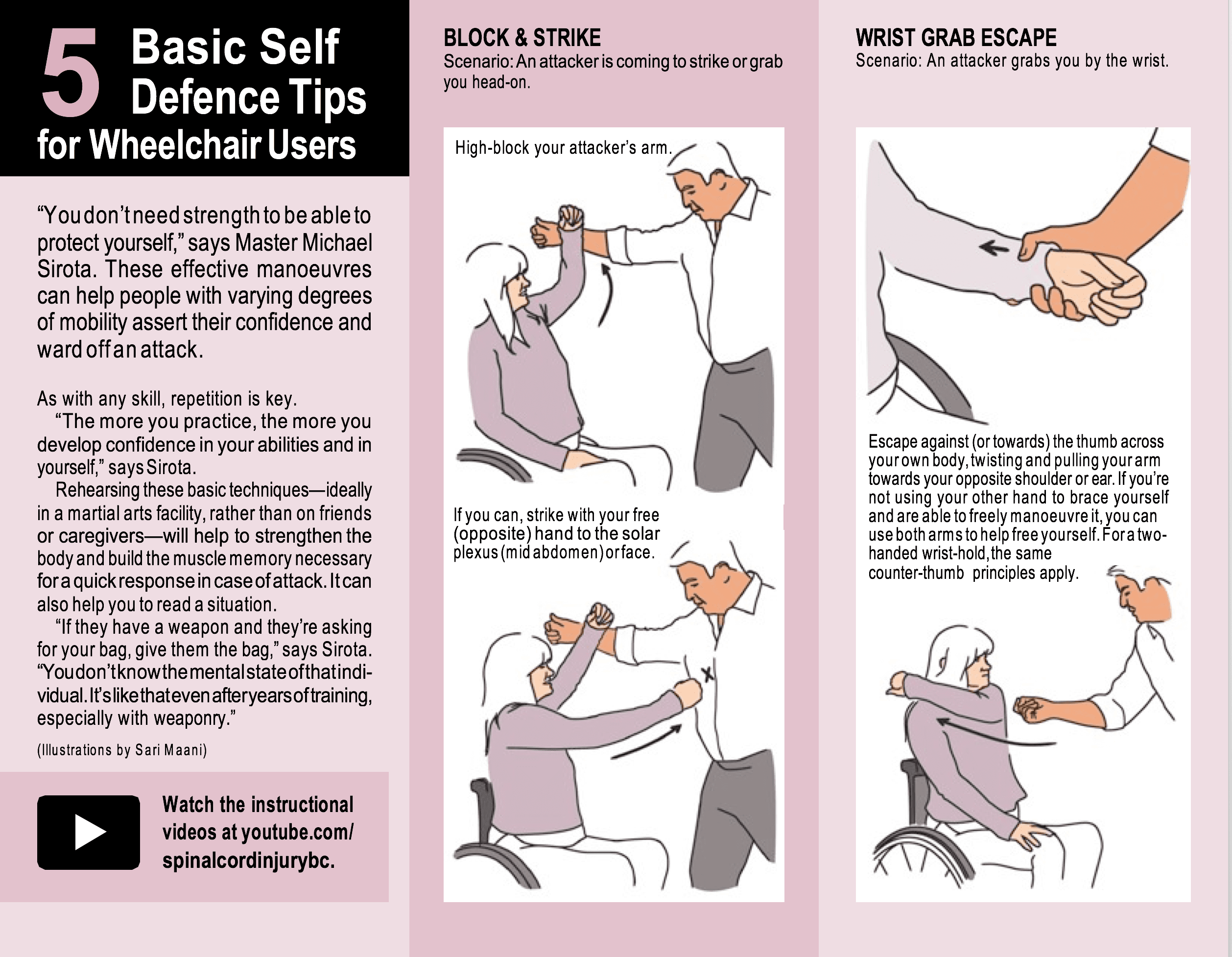
Later that year, at a self defence demo to the PAWS for Independence, Sirota connected with BC Paraplegic Association counselor Vivian Garcia. Together, they envisioned a multi-class self defence course for people with SCI. As far as Sirota could tell, it was completely uncharted territory—not just in British Columbia, but anywhere in the world. Before he set out to teach a gymnasium full of paras and quads how to block, strike, and finger lock, Sirota spent days in his dojang sitting in a chair.“You’re looking at this person and you’re like, ‘How is that person going to do that?’” says Garcia, a T5 paraplegic. “If you’ve got crazy spasms and low dexterity, how are you going to put your fingers in somebody’s throat and stop them from breathing when you can barely stand on your own? And for whatever reason, Michael was able to see through all of that and say, ‘We can just do it this way.’ And we did! And it worked!”
The 15 member class, comprised of 20-somethings and sexagenarians, paraplegics, quadriplegics and individuals with cerebral palsy, was such a hit (and not just literally) that Sirota and his volunteer instructors came back for another two seasons of sessions in 2008. Participants paid a nominal fee for what they assumed would be self-defence demos. They received a life-changing experience in return.
“We had quadriplegics with some hand mobility able to knock people down,” recalls Garcia. “It was fantastic. And the amount of inspiration and people feeling better about themselves! Their confidence levels were going up. Some who were afraid to go out beforehand weren’t afraid anymore. And one guy kicked the ever-living hell out of somebody in an elevator. The guy went to rob him, and the guy had been taking these classes and beat the ever-living crap out of him. It was awesome.”
Other participants who had been afraid to go out by themselves gained a new level of independence. One particular student in his mid-30s had been injured over a decade earlier. Since then, his parents had barely let the man out of their sight, afraid to have him leave the house alone in his chair. Not surprisingly, they accompanied their son to Sirota’s self-defence classes.
“When they saw that he was able to protect himself, I think he was allowed to freely go other places,” says Garcia. “And he should have been going other places for 15 years! But his parents were so afraid that something bad might happen. In his case, he got the freedom to move on. I haven’t seen him since.”
Since the classes, Sirota’s Therapeutic Martial Arts students have included people with SCI, cerebral palsy and brain injury, all looking for anything from increased self-esteem and a release of negative emotions, to improved range of motion, core strength, and motor skills.
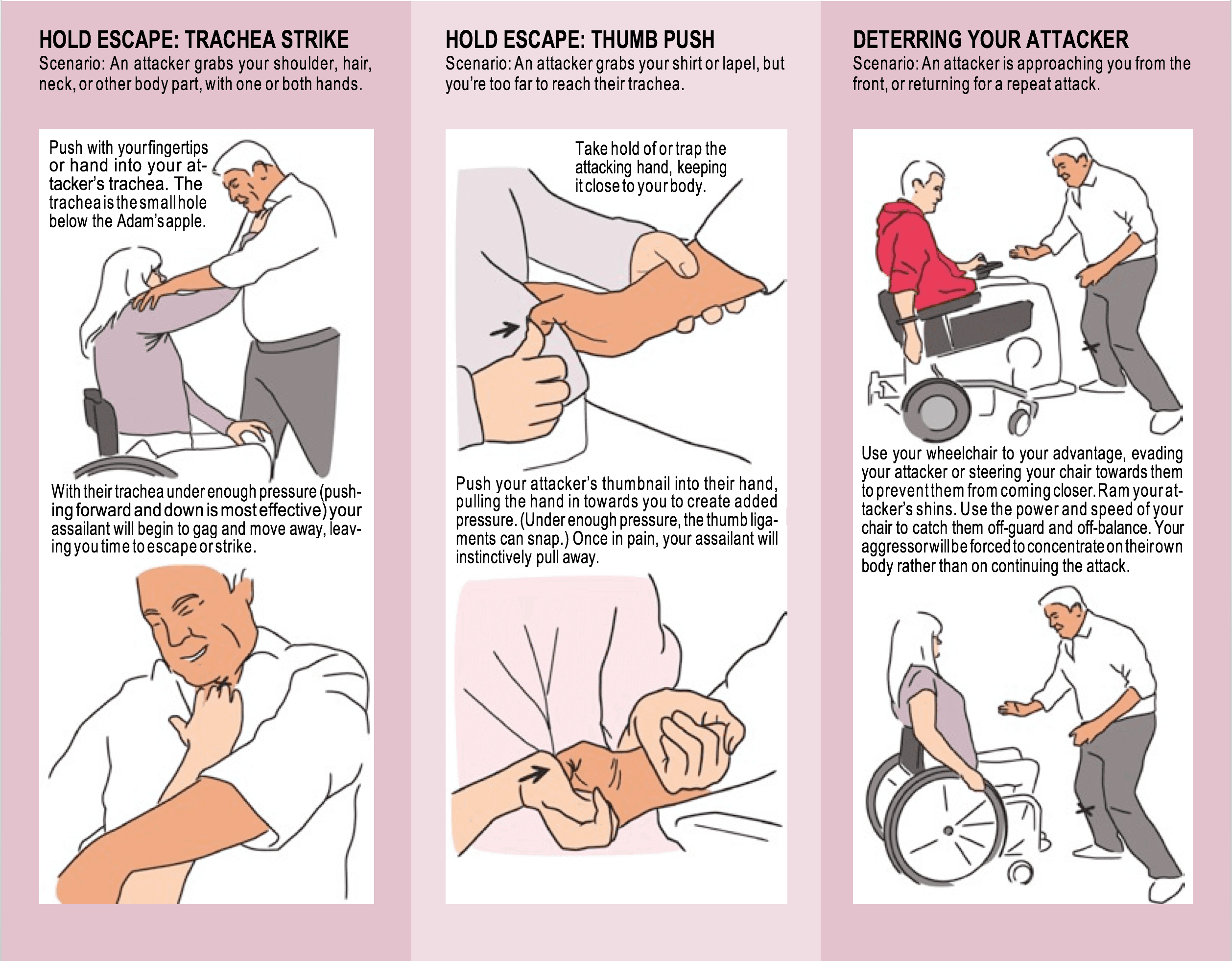
“Physically, we’ve seen a lot of improvement in fine motor skills, gross motor skills, control of their body, even people with MS being able to control their body parts,” says Sirota. “The classes are fairly challenging. If they believe they can do it or want to do it, we’ll make it happen.”
Sirota still teaches students with disabilities at his school, but he’s keen to see group sessions for people with SCI make a comeback. And he’s not alone. Melissa Jugdeo, a recreational therapist at GF Strong and a fellow martial artist with a third degree black belt in the Meibukan Gojyu Ryu style of traditional Okinawa Karate, is no stranger to the therapeutic benefits of the ancient techniques. As a youth, she took up self-defence as a means of building confidence and self-esteem. Years later, she resumed her training at the Port Coquitlam Dojo, honing her skills and self assuredness for future world travels.
“I was recently in Japan at an international gathering for our master, and our style is always promoted as inclusive for people who have injuries or at any age,” says Jugdeo. “But nothing’s really been developed yet for our Meibukan Gojyu Ryu style, especially not wheelchair karate. So I was thinking my work here as recreational therapist, supporting folks to learn adapted leisure skills, can really tie into my personal passion as well, and that I could maybe develop adaptations for our style—wheelchair karate for paras and amputees. It’s just the idea of making it more accessible for the population.”
She’d like to see her clients, and people from the wider SCI community, learn basic self defence techniques, such as blocks, strikes, and basic forms (or katas). And she believes PARC (Physical Activity Resource Centre) in Vancouver could be the perfect location for a new martial arts pilot program for people with SCI.
“For sure it would bring increased confidence, self esteem, focus, emotional control, and awareness of self and others, and there’s a physical health aspect to it,” says Jugdeo. “But there’s also some of the same benefits as meditation, because when you do the forms it’s like ‘moving meditation’—focus and concentration, both physical and emotional. Mind, body, spirit balance is the goal. And then there’s also a sense of belonging.”
Peer Ryan Schweizer gets put through a series of exercises by Master Sirota.And with local champions like Master Sirota, that sense of acceptance is slowly making its way around the globe. After Sirota expanded his practice to all disability groups a decade ago, he reached out to international organizations, empowering instructors from more than 30 countries to start similar Therapeutic Martial Arts programs at home. Thanks in large part to Sirota’s globalization efforts, Para Taekwondo will debut as an official Paralympic sport in 2020, enabling individuals with upper limb amputations or deficiencies to compete at a high level in the sport.
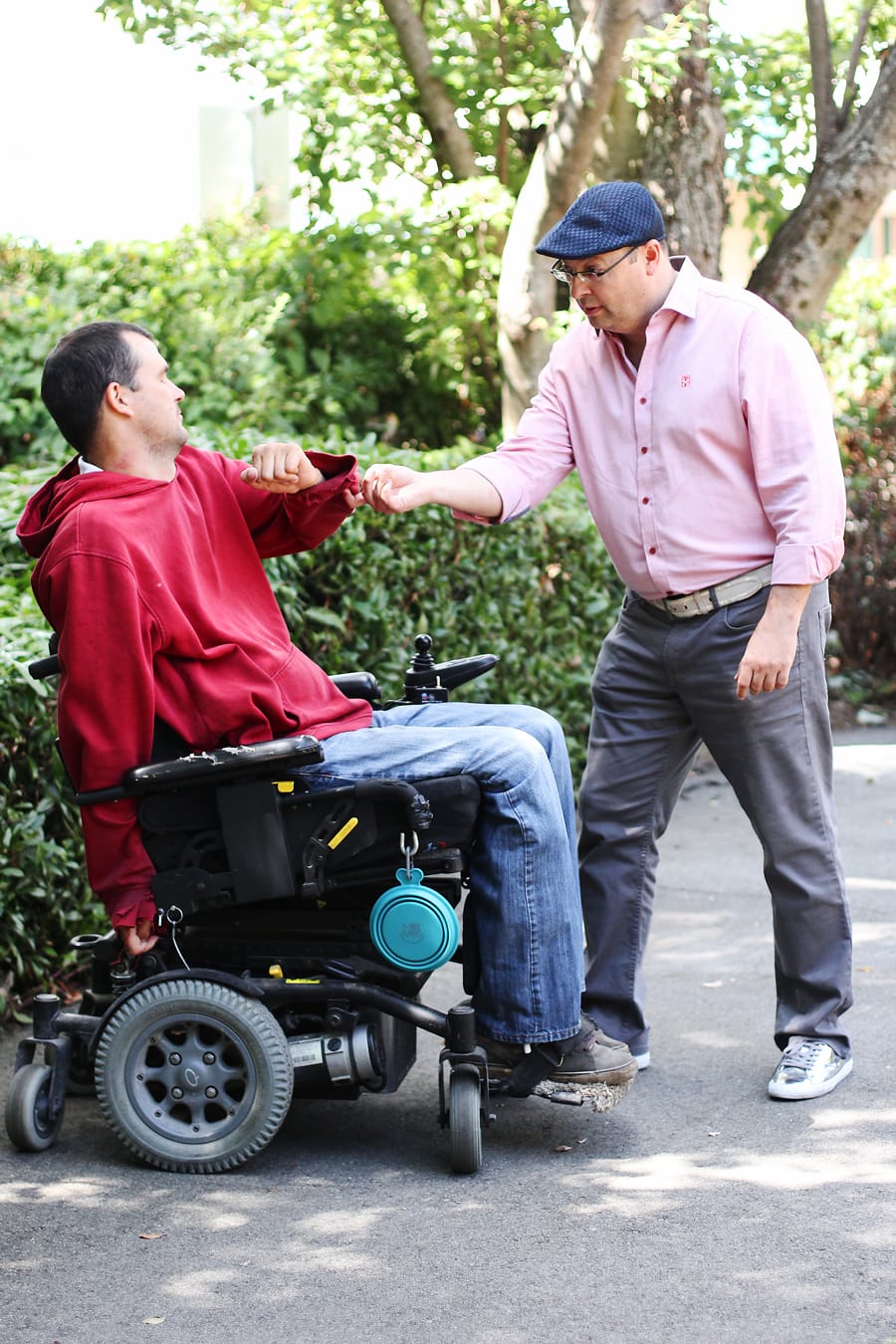
Sirota believes that, in time, there will be Paralympic opportunities for wheelchair users as well. He’s doubtful the next few Games will see a champion from his own gym, explaining that he can’t find anyone who fits the current limb deficiency profile to train with him. But he’s optimistic that, as the Para Taekwondo regulations expand to include other disabilities, the understanding of and demand for adapted martial arts will grow. For now, he’s stepped back from the Paralympics, choosing to divert his energies from the politics of organized sport back to the therapeutic aspects that got him started in the first place.
“It’s a personal journey, in the way of self discovery and personal growth,” says Sirota. “From the sport point of view, it has all the characteristics of physical development. But it’s not really a competitive environment. There’s no competition—the competition is only within yourself of how much you can accomplish and how far you want to achieve and grow.”
You can see Sirota’s top self defence tips in action by watching our latest video.
Want to give martial arts a try elsewhere around the province? Check out martial arts studios in your community. “Martial arts instructors will often take on students even though they may not have the experience,” says Sirota. “Be up front and instructors will learn with you.”
This article was originally published in the Winter 2017 issue of The Spin. Read more stories from this issue, including:
- Exercise Guidelines
- Bowel Care
- 60th Anniversary
And more!
Read the full Winter 2017 Issue of The Spin online!
